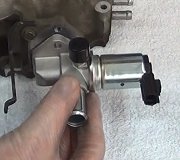It should not move when you turn the ignition switch on. You just confirmed that. If you tug really hard, you can pull the pintle valve out of the IAC motor. Install it that way, then if idle speed is too high when you start the engine, it has to be due to a vacuum leak. You may need a smoke machine to locate that, but a leak that big should be easy to find by pinching off various vacuum hoses. The computer will not retract the valve unless it needs a higher idle speed
You are going to have to use a scanner to see what the engine computer is trying to do. That will also let you see all the other sensor readings the computer is responding to. Most scanners will have an IAC test that allows you to raise engine speed in 200 rpm increments up to 2000 rpm. If that changes engine speed, the IAC is working properly.
Also, remember that just driving the truck will not initiate a relearn of minimum throttle. You have to coast for at least seven seconds. The computer needs to see sustained unusually high manifold vacuum to know when to take a reading from the throttle position sensor and put it in memory. And if you disconnect a battery cable again, then reconnect it, minimum throttle will be lost from memory, and engine speed will be too low. If it is too high, it cannot be due to the IAC position because that entire circuit will not be working yet.
Thursday, October 19th, 2017 AT 9:02 PM



